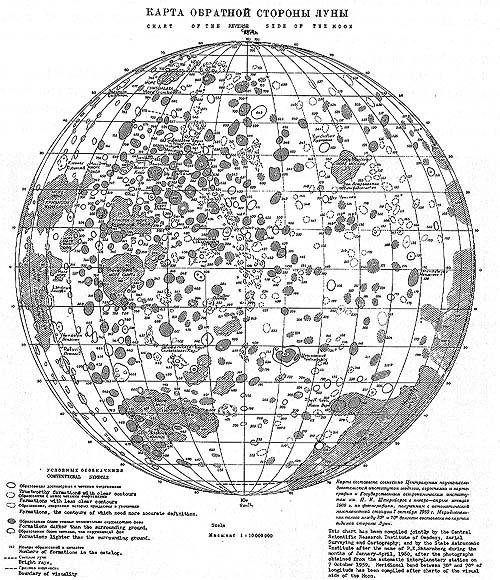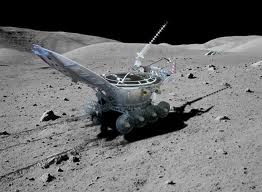How do you tackle the subject of space, a significant contributor to our technological progress in the 20th and 21st century? In my previous blogs on space I have described the development of rocketry, a technology that gave us the means to reach beyond the outer atmosphere and establish our first human-inhabited and artificial robotic systems in near-Earth proximity.
But in treating the subject of space in the 21st century we need to look beyond the race to space, the Moon, and the planets, comets and asteroids of the Solar System. We need to understand what’s in it for us, why space and the technology we invent to explore it will be a driving force for innovation throughout the 21st century.
So how did we get started? It began with the Soviet Union and Sputnik-1, on October 4, 1957 and humanity has never looked back. Sputnik circled the Earth. We then launched many more satellites, some to spy on our neighbours, some to help us improve global communications, some to study the atmosphere, weather, our oceans, land use and more. What started as a two-nation duopoly in space has broadened to become a global adventure today. The United States and Russia have been joined by 48 other countries with satellites in orbit. Nine countries have launched satellites into near-Earth orbit. Six countries and Europe through the 18-member European Space Agency (ESA) have sent probes to explore Solar System neighbours. Business is getting into the act with the United States moving from a government-only contractor to a mixed economic model embracing for-profit companies working on sub-orbital and low-Earth orbit transportation systems.
In the articles that follow we look at the history of our outward urge, starting with the Moon and other nearby Solar System neighbours. We look at this from the perspective of technological accomplishments in achieving success beyond Earth orbit. In this immediate posting we focus on the Soviet Union’s contribution to escaping the bonds of Earth. They were the first to do it and it is a remarkable story.
The Technology to Leave Earth Orbit – The Soviet Union Came First
The launch of Luna-1 by the Soviet Union represented the first human-made object to escape Earth’s gravity.What did it take to send a satellite beyond Earth orbit? It meant developing a rocket capable of lifting a 361 kilogram (790 pound) object, Luna-1, into space traveling at a speed of 11.2 kilometers (7 miles) per second. That amounts to 40,234 kilometers (25,000 miles) per hour.
An augmented R-7 rocket, named Vostok, provided the launch capability. In an earlier blog we talked about the R-7 program, the most successful rocket launching system ever built. For the Soviets to turn it into an orbital escape booster they added a third-stage. This gave them capability to deliver 6-ton payloads into low-Earth orbit, and 1.5 ton payloads into trans-lunar trajectory. Luna-1 proved a remarkable achievement for technology in 1959, passing within 6,000 kilometers of the Moon before entering solar orbit. Its onboard instruments fed telemetry back to Earth providing measurements of our planet’s magnetic field.
A second 1959 triumph was Luna-2. It was the first probe to target and hit a non-Earth object, the lunar surface. The Soviets recognized that reaching the Moon required longer duration power systems to keep instrumentation working. In Luna-3, launched a month after Luna-2, they incorporated solar cell technology to supplement the onboard batteries. When Luna-3 reached the Moon it circled it and returned to pass by Earth. During this elongated orbit of both Earth and Moon its onboard camera photographed 70% of the Moon’s unseen side. The camera used standard 35 mm film. An onboard film laboratory developed the images which were then scanned by a television camera and transmitted using radio waves back to ground stations as the spacecraft approached Earth.

The Soviets Develop Robotic Systems for Planetary Exploration
Right from the start the Soviet Union made the Moon a target of its space program. When President Kennedy announced the Moon as the goal of the American space program in the 1960s he was abundantly aware of Soviet ambitions. The Soviets weren’t hiding anything. They had built heavy lift capacity in their rocket systems far more than needed for ballistic missiles. But the Soviets needed much more than big rockets if they were to succeed. Their shopping list included:
- Multi-stage rockets capable of being started and stopped in mid-trajectory flight
- Satellite systems capable of adjusting flight paths and inserting themselves with pinpoint accuracy into orbit around another space object
- Remote separation of sub-assemblies from the main satellite
- Extended-range power supplies using solar, nuclear and improved battery systems
- Powered controlled descent and soft landing systems for robotic probes
- Mobile robots capable of navigating over uneven remote surfaces
- Instrumentation that worked beyond low-Earth orbit and on remote planetary surfaces
- Two-way communications systems working at never attempted distances
The Soviets mastered these skills but they came at great cost. In 1965 they made four failed attempts (Luna-5 through 8) to soft land Luna probes on the Moon. The technology included vernier rocket packs for controlled descent, nitrogen-bag inflation systems to cushion probes on impact, and instrumentation shielding to achieve ambient temperatures (19 and 30 degrees Celsius, 66 to 86 Fahrenheit)in a space vacuum. These technologies worked to perfection in January 1966 with Luna-9 making the first powered descent to the Moon’s surface. Luna-9 incorporated a panoramic television camera onboard capable of 360 degree coverage.

Two months after Luna-9, the Soviets once again proved they had mastered another technological accomplishment, successfully placing a satellite into lunar orbit. Luna-10 achieved this feat using its course correction engines to slow the spacecraft sufficiently for lunar orbit insertion. The battery-operated instrumentation package included gamma radiation, electric and magnetic field, micro-meteoroid, and solar wind detectors. After 57 days and 460 orbits the batteries finally ran out and the Moon’s first artificial satellite ceased transmissions.
In 1966 the Soviets followed with two more Luna orbiters, Luna-12 providing television transmissions of the lunar surface back to Earth and Luna-13, deploying a lander with a penetrometer to dig 45 centimeters (18 inches) into the Moon surface to study its soil properties.
Luna-16, launched in 1970, after the first two Apollo Moon landings, incorporated robotic systems for descent, sample collecting of lunar surface materials, ascent and then return to Earth. In 1970, Luna-17 delivered a robotic rover to the Moon’s surface, Lunokhod-1.
In 1973, Luna-21 delivered a more sophisticated robotic rover to the Moon’s surface, Lunokhod-2. This rover traveled 37 kilometers during its mission, transmitting more than 80,000 and conducting over 700 lunar soil tests.

The last Luna probe, Luna-24 landed on the Moon in 1976 where it proceeded to take a 2.5 meter lunar core sample and return it to Earth.
The Soviets in their lunar exploration activity created all the technologies needed for planetary exploration beyond the Moon.
What were the Americans doing in parallel? Read the next blog.














